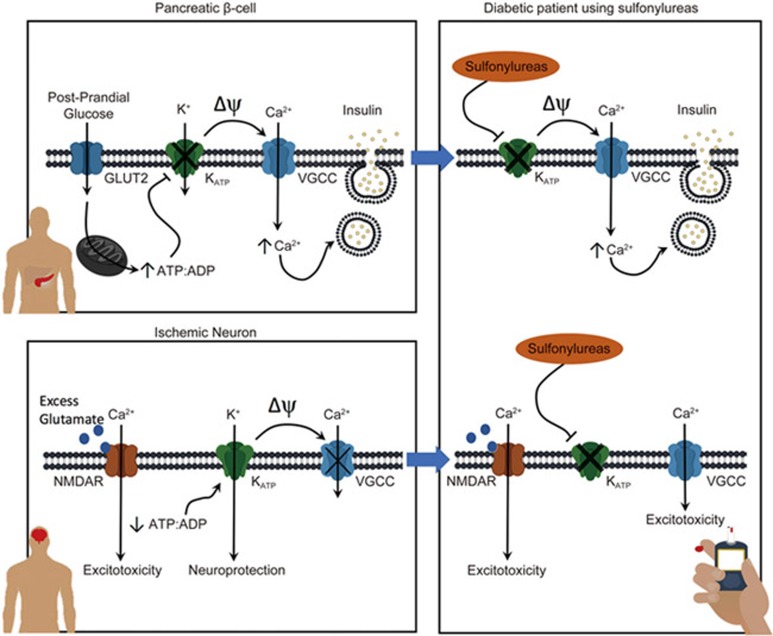Figure 1.
KATP channels are neuroprotective and sulfonylurea use can exacerbate ischemia-induced brain damage. In the pancreatic β, KATP channels serve as a metabolic sensor to post-prandial glucose metabolism. The closure of KATP channels depolarizes cell membrane, activates voltagegated calcium channels (VGCCs) and thus leads to insulin release. In the diabetic patients, sulfonylureas can be used to block KATP channels and increase insulin release. In an ischemic neuron, the reduction in ATP: ADP ratio opens KATP channels, lowering membrane potential and stabilizing the membrane, thus reducing cell excitotoxicity. In other words, the opening of KATP channels is neuroprotective. In the diabetic patients using sulfonylureas, the neuroprotective effects of KATP channels neuroprotective effects are abolished.

